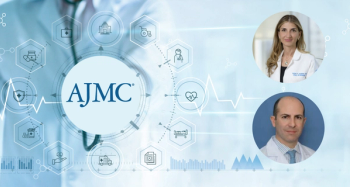
Potential Impacts of Halting the CGT Access Model: AMCP's Adam Colborn
Abandoning efforts to reform payment for cell and gene therapies for Medicaid beneficiaries could allow ongoing access barriers to persist, said Adam Colborn, JD, of AMCP.
Adam Colborn, JD, associate vice president of congressional affairs, AMCP, discussed how abandoning efforts to reform payment for cell and gene therapies within Medicaid via the Cell and Gene Therapy Access Model (CGT Access Model) could allow ongoing care access barriers to persist.
This transcript has been lightly edited for clarity; captions were auto-generated.
Transcript
You previously spoke to the
Medicaid beneficiaries are, I think, at a particular disadvantage when it comes to accessing high-cost treatments like cell and gene therapies. Many of these treatments are available only through value-based or outcomes-based contracts, which are often unavailable to Medicaid programs for a variety of reasons.
I think one of the other key factors in this is that Medicaid programs are not well equipped to handle or absorb the cost of a fee-for-service payment for a cell and gene therapy that doesn't work. These are treatments that have highly individualized outcomes, and when that doesn't work, that could leave Medicaid on the hook for potentially $1 million or more. I think the CGT Access Model was a really interesting approach, because what it proposed to do was it would allow the Center for Medicaid and CHIP Services, CMCS, to negotiate 1 sort of nationwide contract that all Medicaid programs who had signed a letter of intent to participate could have access to those standardized contract terms.
This will, if it moves forward, mainly benefit Medicaid programs who don't already have expertise in value-based contracting. There are a few programs out there that are pretty sophisticated in that regard, and so they may not see the same benefit from these programs. But at the same time, if you are a program that doesn't have the capacity to do that, this is an easy way to get access to something that has, so far, been out of reach.
A lot of the comments I've seen think that President Trump's executive order did sort of pause or cancel this model, but I've heard recently from some Medicaid colleagues and some other folks in the Medicaid world that CMMI [Center for Medicare and Medicaid Innovation] sent an email to Medicaid programs indicating that this model would continue to move forward. I don't know what to make of that. I think we probably need to take that email with a grain of salt, just given how fluid the situation is right now. I don't know that just because it was true a week ago means it's true today. It's to be determined on that front. I think that's one area where Congress will actually have something right away that they can do.
There was a bill that AMCP supported last year called the
What the bill would have done is just taken that rule, it would have codified it, and then some of those pain points where people are wondering, "Well, what exactly does this mean?" or "How exactly do we calculate this?" It would have offered additional detail and sort of standardized definitions for some of those key terms. Unfortunately, the bill did not pass last year, but we're hopeful that it will be reintroduced this year. Congresswoman Eshoo retired at the end of 2024, but Congressman Guthrie is the new chair of the Energy and Commerce Committee, which shares jurisdiction over Medicaid with the Ways and Means Committee. Hopefully before too long, we'll either see the bill reintroduced or we'll see its provisions included in some sort of larger health care package.
Newsletter
Stay ahead of policy, cost, and value—subscribe to AJMC for expert insights at the intersection of clinical care and health economics.













































